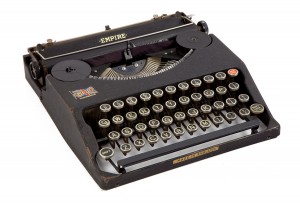 Try asking young people why would our keyboard has QWERTY key arrangement. I am quite sure that most of them will simply say that they have no idea why, or will think that it is to allow people to type faster. Is that really the reason behind placing letters in such arrangement?
Try asking young people why would our keyboard has QWERTY key arrangement. I am quite sure that most of them will simply say that they have no idea why, or will think that it is to allow people to type faster. Is that really the reason behind placing letters in such arrangement?
By “young people” here, I am referring to people who were born in years when having personal computer at home was already considered normal. That’s roughly people born in the 1990s, or later. Believe it or not, having personal computer at home was not always a common thing. Back in the year of 1940 to 1960-ish, a computer is about the size of our bedroom or even significantly larger, with computing power less than what today’s smartwatch would have. I am not even talking about smartphone here. In 1970s decade, the size of a computer gradually shrunk, but the price was not. Only major companies or government institutions can afford to have computers.
What about before 1940? Well, historically speaking, the first machine to calculate the simplest operation (Boolean logic) was invented in 1937. By “calculating”, that’s all it can do, no display whatsoever. Before that… uh, computer did not exist, yet.
 The first computer with user interface of typing input and video display terminal was introduced back in 1964. However, even before that, early forms of computer already had some connection with the concept of typewriter. If you never saw or used a typewriter, it’s a mechanical machine that allow us to type letters on a piece of paper. This machine long existed before computers and was considered as de-facto way of how humans interact with alphabet letters for typing purposes. This machine works by striking a ribbon to transfer ink or carbon impressions onto paper. Typically one character is printed on each key press. So we press a key and then a metal leg with raised pattern of the key’s letter will move to punch ink ribbon to produce the letter on our paper.
The first computer with user interface of typing input and video display terminal was introduced back in 1964. However, even before that, early forms of computer already had some connection with the concept of typewriter. If you never saw or used a typewriter, it’s a mechanical machine that allow us to type letters on a piece of paper. This machine long existed before computers and was considered as de-facto way of how humans interact with alphabet letters for typing purposes. This machine works by striking a ribbon to transfer ink or carbon impressions onto paper. Typically one character is printed on each key press. So we press a key and then a metal leg with raised pattern of the key’s letter will move to punch ink ribbon to produce the letter on our paper.
Back to our first question, why QWERTY?
QWERTY arrangement is the most popular letter arrangement in typewriter machines. This arrangement was invented by Christopher Latham Sholes in 1873, who is also one of co-inventors the typewriter machine.
There are 26 letters in our alphabet set. Along with numbers and other symbols, there are a number of metal legs that need to be arranged to move to punch the ribbon. Ideally, only one leg should punch the same spot of a ribbon. When user types too fast, the metal leg from the next letter will start to move before the metal leg of the current letter returns to its standby position, causing the typewriter to jam. This quickly became the biggest problem with early typewriters and people tried to type as fast as they can. Through years of experiments, Sholes arranged the letters in such an arrangement to slow down typing as much as possible. Meaning, this particular arrangement will have the keys in the furthest locations for the most common English words, forcing a user to move his/her hand the longest distance and thus, the typing speed slowed down and less jamming was experienced.
When computer was invented, typewriter machines and its QWERTY arrangement was already so common for users, it was decided to simply use the same arrangement even though computers do not use mechanical metal legs to do their function.
QWERTY is definitely not an arrangement to allow faster typing. In fact, it does the exact opposite, at least for English words. In contrast, another letter arrangement called DVORAK is designed to allow the least possible finger movement to enable the fastest possible typing. But of course, who needs faster typing if that means we need to learn something new? Humans are, by nature, reluctant to change after all.

Leave A Comment